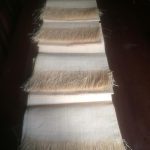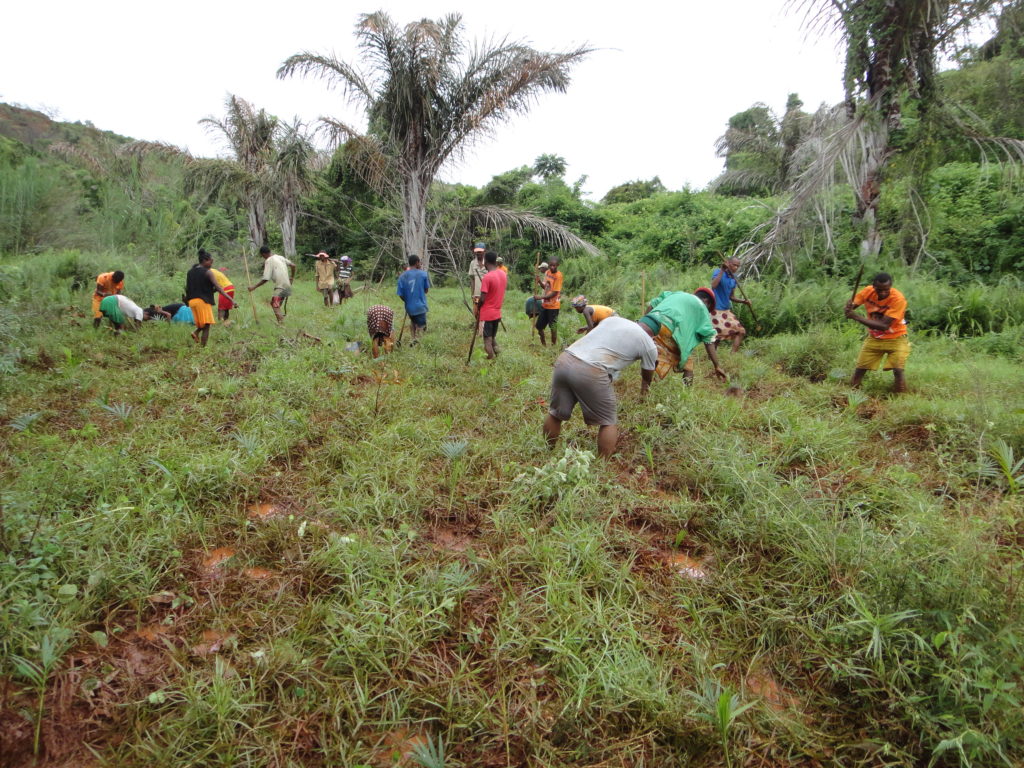MADAGASCAR RAFFIA SPECIALIST
We are specialized in the exportation of high grade of raffia (raphia farinifera) from Madagascar.
SMI - Rafiastar
A Few Words About Us
We are specialized in the exportation of high grade of raffia (raphia farinifera) from Madagascar.
Should you be in search of raffia for a special application as decoration, gardening -agriculture , hunting camouflage , crocheted or braided hats, we shall source you the right grade of raffia at the best price.
The exclusive partnership we have built up year after year with our Malagasy partners allow us to provide you a large range of raffia products.
We do sell our raffia coloured and natural in full hanks, in bundles of any size and in woven raffia mats in rolls or in pieces.
We can arrange direct shipment from the origin to your port of discharge.
We do always hold some stock of bales and bundles in our warehouse in France.
SMI - Rafiastar
OUR PRODUCTS
RAFFIA FULL HANKS of 1kg
 HANKS : Natural raffia having a ham shape in full hanks of 1Kg or 500gr net each
HANKS : Natural raffia having a ham shape in full hanks of 1Kg or 500gr net each
We do follow strictly the Malagasy raffia grading specifications < Click here
Packing : pressed bales of 50 kg or 100 kg net each
RAFFIA BUNDLES
 Bundles : any type from 20 gr to 250 gr
Bundles : any type from 20 gr to 250 gr
Labels : we can wrap the bundles at your own brand with a paper or plastic label with your UPC code#
Packing : PP bags, plastic bags or cartons
WOVEN RAFFIA MATS
 Raffia mats Emyrne in pieces 160/180cm in lengths x 55/60cm in width
Raffia mats Emyrne in pieces 160/180cm in lengths x 55/60cm in width
Raffia mats Langara 120cm in width x 50m in length
Packing : PP bags or in cartons
COLOURING
The dyes used for our coloured bundles and hanks are imported from France and are complying with the European Reach Act. They are free from Formaldehyde.
We already offer a large range of colours but we can also match your own colours or Pantone #
Colour raffia chart – Click HERE
SMI - Rafiastar
SUSTAINABLE DEVELOPMENT


There are plenty of issues regarding sustainable matters in Madagascar. The country is facing deforestation due to the cutting of primary and secondary forests to extend arable lands, pastures plus the use of firewood in several industrials sectors and local communities.
We are committed along with our Partner in reforestation project under the authority of the Ministry of Environment and Sustainable Development represented by its Interregional Director.
Our projects is in the Mahajanga region near the village of Tsaramandroso in the North West of Madagascar.
Replanting is done on state-owned lands managed by local villages. When lands are not appropriate for the growth of raffia palm trees, we replant various varieties of fast-growing trees as eucalyptus, acacia, tamarind trees and others.
It has been implemented campaigns of formation, information and conscientisation of local populations through workshops on the significance of reforestation to protect the forest and the raffia sector for local communities as well as the environment.
In 2021, we have sown 4 000 young palm tree plants with the help of the local community and our partner’s team.
Since 2012, over 40 000 raffia palm trees have been replanted.









SUSTAINABILITY IN RAFFIA HARVESTING
- The raffia can be harvested only by the croppers who have received a theorical and practical formation on the good practices to cut raffia.
- They must strictly comply with the right length of fibres before pruning, only long fibres.
- Croppers have been sensitized to the good management of the resource. It is necessary to let a certain period between 2 campaigns to allow the raffia tree to regenerate during the rainy season and the fibres to reach the good length.
- There is a crop every 6 month on each palm tree in accordance with the Malagasy law for the regeneration of the resource.
- A traceability system has been set up on big parcels. It allows an easy, direct, and accurate identification of the non-compliance of quality and sustainability rules.
- A follow up and quality control monitoring is carried out right after the crop at the collect office. All non-compliant products will be rejected.
- The price paid to the croppers is revaluated every year. Collectors are sensitized about the necessity to respect a minimum purchase price to promote the significant economic benefit of the raffia sector for local communities.
Our goal is to avoid the destruction of the raffia resource to the profit of other cultivation as rice fields or fish farming.

SHIPPING & MOQ
We can ship directly from Madagascar to any destinations in the world full or combined containers of 100 KG pressed bales (natural & coloured) and / or raffia bundles (natural & coloured)
- MOQ: 20’ CONTAINER
- SALES CONDITIONS: CIF for a Full Container Loaded
For European countries, we can consolidate your goods in one of our container to France and arrange upon arrival a delivery directly to your premises
- ExWorks, DDP, DAP for consolidated goods
MANUFACTURING PROCESS
1 - Raffia extraction
The raffia grows naturally in humid areas closed to rice fields and swamps.
2 - Pruning of the young unopened raffia palm branches
We do not cut off all the unopened raffia palm leaves from one palm tree. Otherwise, it will kill the palm tree.
3 - Extraction/ removal of the green raffia leaves
Removal of the green raffia leaves inside the branch by the Farmer
The raffia fibre is first gently detached from the leaf. Then the leaf containing the raffia fibre is folded on one part. Afterwards, the Farmer blocks the leaf with the thumb and the forefinger in one hand and pulls with the other hand to remove the raffia fibre along the entire length of the leaf.
The raffia fibres once extracted from the leaves are balled to be dried in the sun.
The output per month of one raffia palm tree is around 300 to 800grs of dry raffia.
Extracted green raffia fibbers put in ball to be dried
4 - Drying & Storage in the bush
The unsorted raffia is packed in big hanks and stored in a warehouse in the producing area.
The green raffia is naturally dried in the sun
The raffia then dried will be stored
5 - Transportation from the bush to the processing plant
There are two means of transport for the raffia unsorted in big hanks, and it is usually multimodal. The raffia will be firstly loaded into a truck, then loaded on a barge to go up the river to Mahajanga or on a dhow by sea. Afterwards it will be discharged again to the processing plant
6 - Arrival at the processing plant and weighing
Upon receipt at the processing facility in Mahajanga in bulk the raffia unsorted is unloaded from the truck and weighed
7 - Sorting of the raffia
The raffia fibbers are sorted by grades and qualities. A part will be used to make hanks of 1 kg the other part to made bundles or to wave mats or any other products natural and coloured
8 - Manufacturing of hanks, bundles and mats
We manufacture according to the Malagasy grading for the hanks and following our buyer’s specifications for the bundles.
9 - Shipping
We ship our products on FCL basis or mix container to any destination in the world or in France to deliver customers all over Europe.

